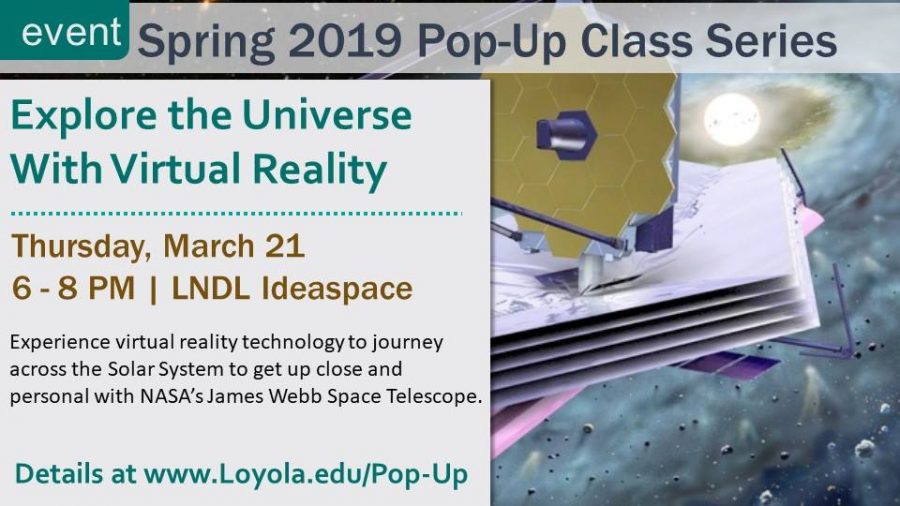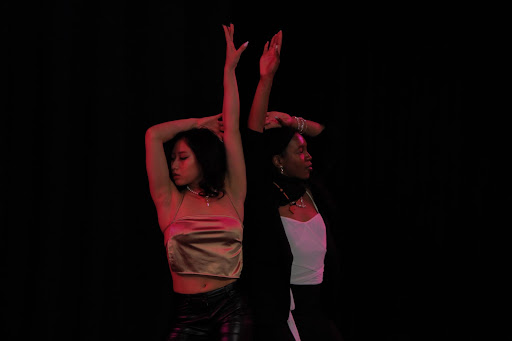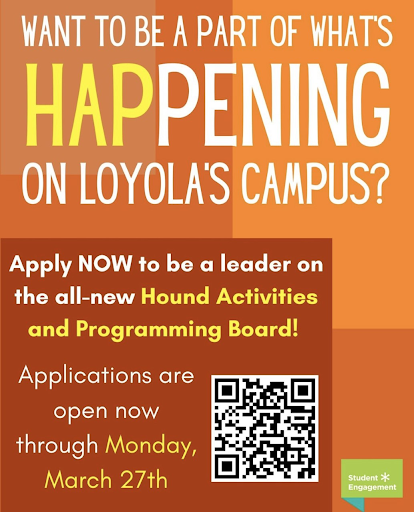On Thursday, March 21, Chad Smith, a technology associate at the Office of Public Outreach at the Space Telescope Science Institute, came to the Loyola Notre Dame Library to discuss and demonstrate The James Webb Space Telescope Virtual Reality Experience.
The topic is based off of Smith’s final thesis, written while he was attending the Maryland Institute College of Art (MICA). The James Webb Space Telescope Virtual Reality Experience is a tool that will leverage virtual relative technology to engage and educate audience members by allowing them to interact with the James Webb Space Telescope (JWST) in a way that is fun, exciting, and exploratory.
“Being a part of the public outreach department at Space Telescope, what we try to do is take complex ideas in astronomy and make them accessible to the general public,” said Smith.
He explained that a lot of the images published in Time Magazine, for example, are because he and his team work to make things accessible so that the public can learn more about space. Smith said that virtual reality (VR) is simply a medium of communication. In a larger definition, VR is the use of computer technology to create a simulated environment. Unlike traditional user interfaces, VR places the user inside of an experience. Instead of viewing an immobile screen in front of them, users are immersed and able to interact with 3D worlds. By simulating as many senses as possible, such as vision, hearing, and touch, the computer is transformed into a gatekeeper to this artificial world.
The only limits to nearly-real VR experiences are the availability of content and cheap computing power.
VR gives the ability to place users where they wouldn’t normally get to be. It is also being used in humanitarian efforts like Clouds over Sidra, a virtual reality the United Nations put out to show what it’s like to be living as a Syrian in a refugee camp.
The Space Telescope Institute has four phases on how to teach more people about VR and space.
The first phase is to expose this technology to a well-educated general public, the second to professional and amateur astronomers, the third to high school and middle school students, and finally, the fourth to simplify the science enough so that elementary students can understand. The purpose of these phases is to be able to break down the technology enough so that everyone can understand how to use it and be able to enjoy the benefits that VR has to offer.
Smith then allowed students who attended the class to use the James Webb Telescope Virtual Reality Experience. Every student that used it was amazed by the graphics and how stimulating the experience was.
Samantha Lulov ’20 said, “Virtual reality is not only fun, but a way to interact and learn in new ways that would not have otherwise been utilized in previous scenarios. I see this as a way companies can strategically innovate and provide consumers with alternative approaches to traditional methodology.”
Lulov felt that VR can make a positive impact on all industries and the companies and consumers that will be using this technology.
Image Courtesy of Loyola/Notre Dame Library’s Facebook















































































































Anonymous • May 7, 2020 at 2:23 am
4